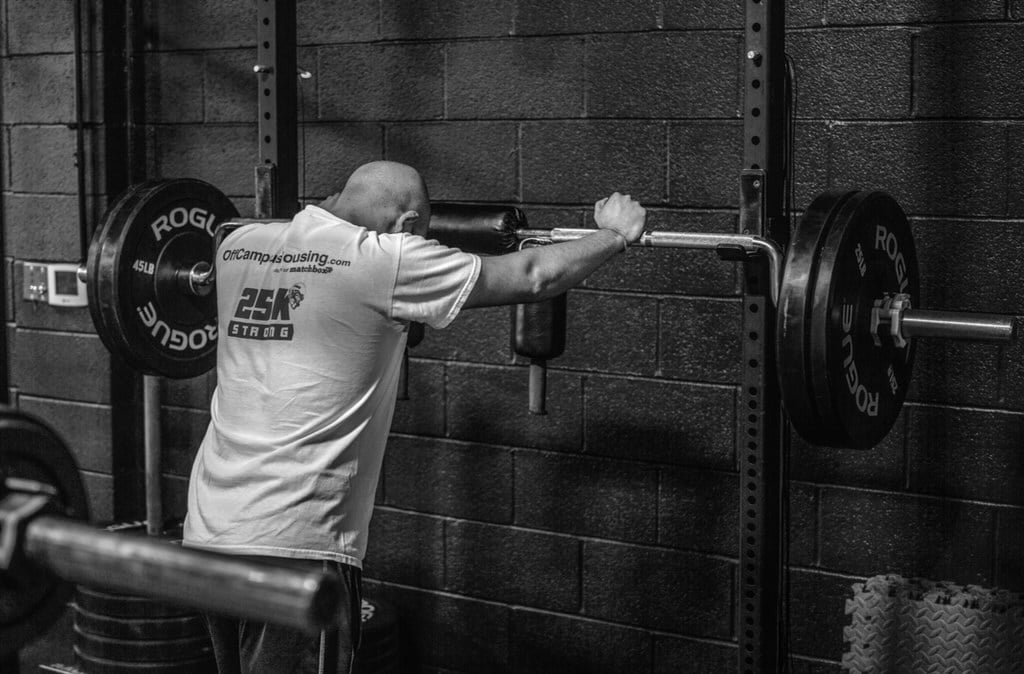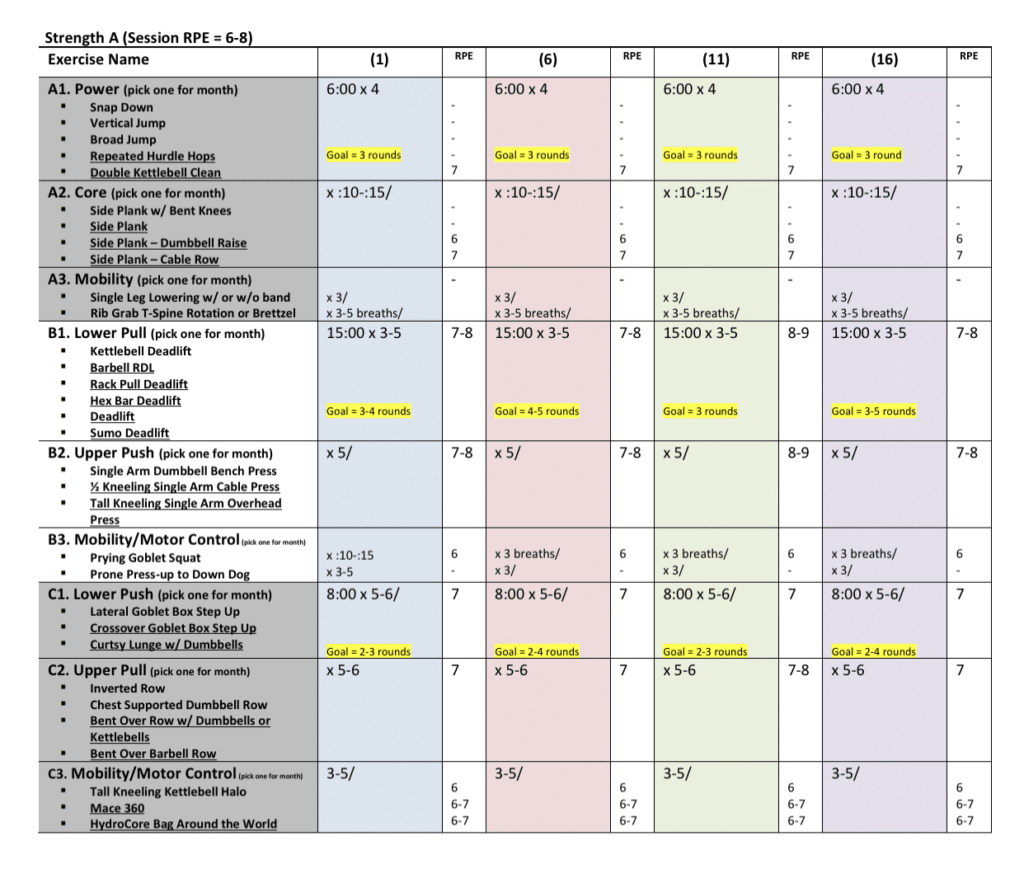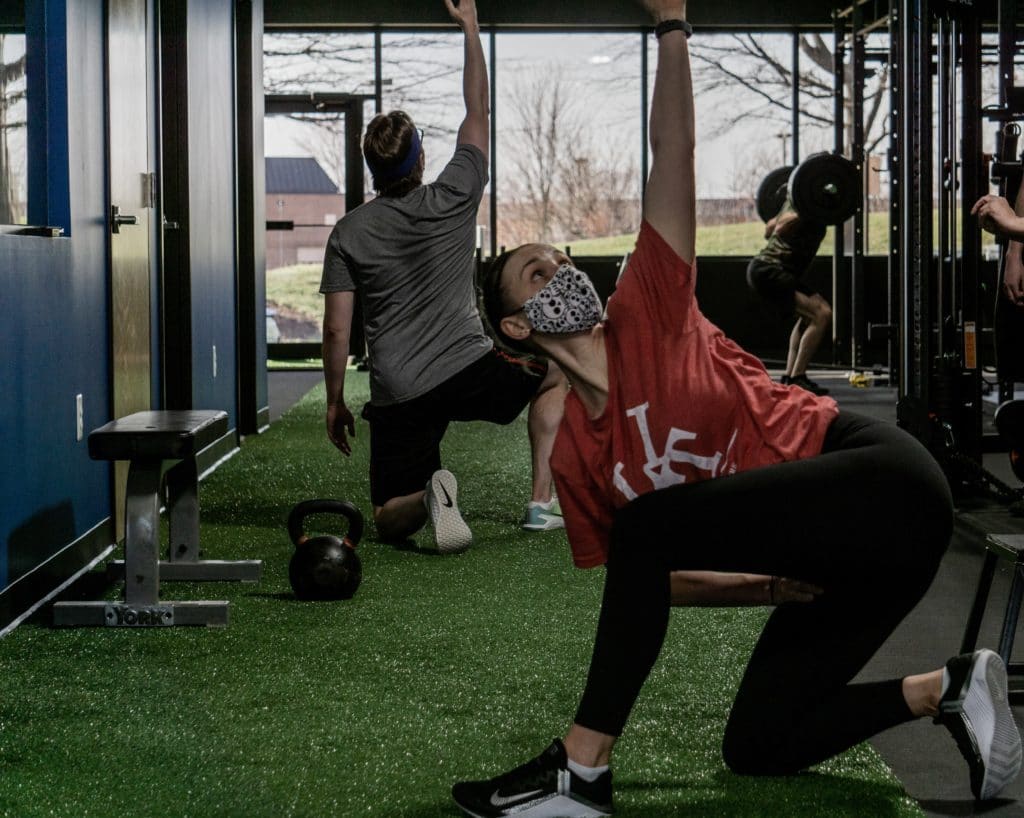When you’re resting between sets, it might feel like you’re wasting time. The truth is that downtime is important.
Why? Because rest is key to getting stronger.

How Resting Makes Us Stronger
When you think “strong,” you might picture muscles. But muscles are only part of the strength equation. Our nervous system actually plays the biggest role in strength development.
When we pick something up, our nervous system signals the motor units in our muscles to contract.
To get stronger, our nervous system adapts to recruit motor units faster, or to recruit more of them. Lifting heavy weights improves each type of recruitment.
So, if we want to get stronger, then we have to lift progressively heavier weights.
And when we rest more, we can lift heavier.
In a 2009 study, De Salles et al, found that ”…resting 3-5 minutes between sets produced greater increases in absolute strength, due to higher intensities and volumes of training.” (1)
The trainees resting for three to five minutes (compared to a one-minute rest group) got stronger. By resting they could lift heavier weights and handle more work.
So, even if you feel like you’re ready to go again, keep in mind that strength is mostly a neurological adaptation—and the nervous system is far slower to recover than muscles are. Give it a little more time and you’ll actually do more total work with heavier weights.
Two Lifters
Let’s look at an example of two people safety bar squatting to show how this works in real life.
Lifter 1 uses a ninety second rest period, while Lifter 2 uses a four-minute rest period. Both are doing sets of three to five reps.
Lifter 1 loads the bar with 150 pounds and squats five times. After ninety seconds they squat again and do four reps because it felt harder than set one. After another rest period they completed three reps.
Lifter 2 squats 150 pounds five times, then rest four minutes. They squat five more times. It feels easy so they add ten pounds to the bar and complete five more reps.
By resting, Lifter 2 completed more reps at a heavier weight. Lifter 1 was tired and completed less reps.
How We Use Rest Periods at Beyond Strength
At Beyond Strength, each strength workout is designed so that a given number of “rounds” are completed during a certain time frame.
Here’s a rundown of our main strength work on our Strength A and Strength B workouts.

Week one’s goal is three to four rounds. Folks are learning new moves and figuring out weights for the given exercise. That requires a moderate pace.
The week two goal is four to five rounds. The learning is done, now we increase the overall amount of work.
Week three changes things. The goal is three rounds because the intent is to lift heavier. So, more rest is built into the workout. Rushing from exercise to exercise without enough rest defeats the training goal. (And those rushing around miss out on the best possible training effect.)
Week four’s goal is three to five rounds. It’s dealer’s choice. Folks can choose to get in more work, slow down and lift heavier, or take it easier if they feel like they need more recovery.
But you might be wondering, “What do I do during my rest periods?”
Purposeful Pacing
In our system, mobility training is built into our rest periods. That makes it simple to pace yourself between sets of the main strength movements. It goes a little something like this.
*Finish your set.
*Take a few breaths and maybe grab a drink.
*Do the mobility movement that’s paired with the strength movements.
*Take yourself a few more breaths.
*Check the clock for pacing (and if you’re at Beyond Strength, listen for the coach to all out the time as well)
*Check your weights. See if you’d like to go up or down for the next set to stay within the RPE.
*Think about what, if anything, you’d like to improve during the next set. Get your head on straight and go through the performance cues you’ve been taught.
*Do another set of the strength exercise.

Summary
Because strength is mostly a neurological adaptation, it requires more rest than you often think you need. Follow good pacing and you’ll do more work with heavier weights. The result is a stronger you.
Sources:
- De Salles, Belmiro Freitas, et al. “Rest interval between sets in strength training.” Sports medicine9 (2009): 765-777.
